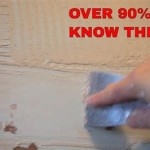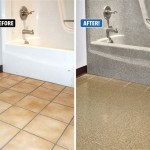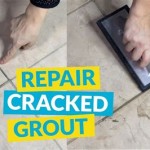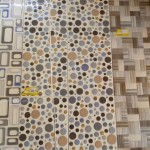Can You Lay Tile Over Cement Board?
Cement board, also known as backer board, is a popular substrate for tiling projects. It offers superior moisture resistance and durability compared to drywall, making it an ideal choice for areas like bathrooms, kitchens, and laundry rooms. A common question that arises during tile installation is whether you can lay tile directly over existing cement board. The answer, in most cases, is a resounding yes. However, there are specific factors and considerations to keep in mind before proceeding.
Evaluating the Existing Cement Board
Before installing tile over cement board, it is crucial to assess the condition of the existing substrate. The following factors should be considered:
- Stability: Ensure the cement board is securely attached to the underlying structure. Any loose or unstable sections should be addressed before proceeding.
- Flatness: The surface of the cement board should be flat and level. Unevenness can lead to uneven tile installation and potential cracking.
- Moisture: Cement board is moisture-resistant but not waterproof. Check for any signs of water damage or leaks. If any exist, they must be repaired before tiling.
- Previous Tile Installation: If the existing cement board has previously had tile installed, ensure the adhesive is properly bonded and the substrate is sound. Any loose or cracked tile should be removed, and the adhesive should be thoroughly inspected.
If the cement board meets these criteria, it is generally safe to lay tile directly over it. However, if any issues are found, it may be necessary to remove the existing cement board and install a fresh layer.
Preparing the Cement Board for Tile Installation
Once you have determined that the existing cement board is suitable for tiling, the next step is to prepare the surface. This involves:
- Cleaning: Thoroughly clean the cement board to remove any dirt, debris, or existing adhesive residue using a damp cloth and a mild detergent. Allow the surface to dry completely before proceeding.
- Priming: Applying a primer specifically designed for cement board is recommended. This creates a better bonding surface for the tile adhesive and helps prevent moisture from penetrating through the substrate. The primer should be applied according to the manufacturer's instructions.
- Patching: If any minor imperfections are found in the cement board, such as cracks or gaps, use a cement board patch to repair them. Allow the patch to cure completely before proceeding with the tile installation.
Following these preparation steps ensures the tile adhesive adheres properly to the cement board, creating a strong and durable bond.
Choosing the Right Tile Adhesive
Selecting the appropriate tile adhesive for laying tile over cement board is crucial for successful installation. Consider the following factors:
- Type: There are several types of tile adhesives available, including thin-set mortar, mastic adhesive, and epoxy adhesive. Thin-set mortar is generally the most suitable option for laying tile over cement board, as it provides a strong and durable bond.
- Moisture Resistance: Choose a tile adhesive specifically formulated for use in wet areas, such as bathrooms or kitchens.
- Compatibility: Ensure the tile adhesive is compatible with both the type of tile and the cement board substrate. Refer to the manufacturer's instructions for specific recommendations.
Using the proper tile adhesive ensures a strong bond and prevents the tile from detaching or cracking over time, especially in areas prone to moisture.
Additional Considerations
While laying tile directly over cement board is often feasible, there are a few additional considerations to keep in mind:
- Tile Size: Large format tiles may require additional support to prevent them from sagging over time. Consider using a thicker layer of thin-set mortar or adding a layer of backer board for added stability.
- Grout Joint Size: When using a thin-set mortar, avoid using grout joints smaller than 1/8 inch. Smaller joints increase the risk of cracking and damage to the tile.
- Expansion Joints: If the area being tiled is large (greater than 100 square feet), include expansion joints in the tile installation to allow for movement and prevent cracking.
- Professional Assistance: While laying tile over cement board can be a DIY project, it is recommended to consult with a professional if you have any doubts about the process or if the project is complex.
By considering these factors and carefully following the installation guidelines, you can ensure a successful and durable tile installation over cement board.

How To Install Cement Board The Home Depot

How To Install Cement Board On A Floor Diy Family Handyman

How To Install Hardiebacker Cement Board On Floors James Hardie Pros

Easily Install Cement Board To Prep For Tile Installation

How To Install Cement Board The Home Depot

How To Install A Cement Board For Tiling Beaumont Tiles
:max_bytes(150000):strip_icc()/can-you-install-tile-directly-on-concrete-1822600-04-458f7bb6c78348c1835cf8054ef36553.jpg?strip=all)
How To Install Tile Over Concrete

How To Install Cement Board Cbu For Floor Tile

How To Install Cement Board In 3 Easy Ways Q1 2024 Infographic

Tile Installation Backer Board Around A Bathtub Family Handyman
Related Posts








